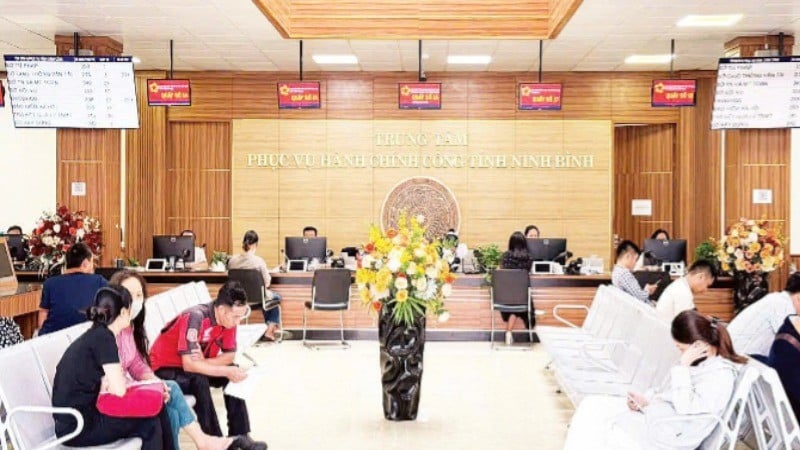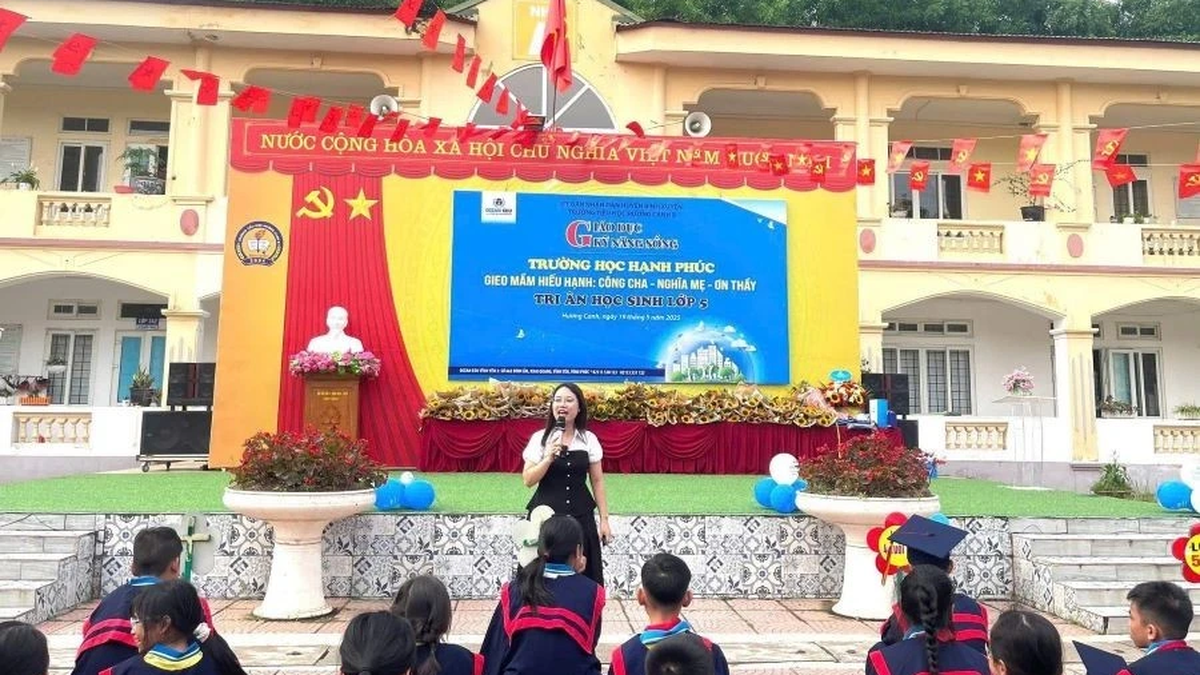
In the operation of two-level government, digital technology is considered the foundation for the transformation process, ensuring that the streamlined apparatus still operates effectively. In order to avoid service interruption when switching from a three-level government to a two-level government model, and to ensure smooth online settlement of public administrative procedures for the people, localities have had drastic instructions and many new approaches.
Positive Start
As soon as the new government came into operation on July 1, Ninh Binh province turned off all the old e-government information systems of the three provinces and switched to the new shared system. The initial operation of the two-level local government has had positive effects, especially for the people. Administrative procedures can be completed right at the place of residence, instead of having to return to the place of permanent residence registration as before. This favorable start was due to the fact that Ninh Binh province had previously piloted the two-level local government model, which was considered a rehearsal with real situations, real processes and real people.
The trial operation process helps localities have time to review the entire process and system. In addition, key technology units such as VNPT Ninh Binh province not only directly build and operate digital infrastructure for the province's new model, but also organize many technical support sessions at the grassroots level. "We have arranged two permanent staff members at each commune and ward; at the same time, we have established a Zalo group to provide 24/7 technical support to handle any problems arising at the scene. In the coming time, we will continue to improve, adjust, and upgrade systems and software to meet the professional requirements arising in the two-level government model," said a representative of VNPT Ninh Binh province.
In Thai Nguyen, the establishment and adjustment of software and data systems to suit the post-merger organizational structure is considered more complicated because the entire implementation solution is completely new. Mr. Dao Ngoc Tuat, Deputy Director of the Provincial Department of Science and Technology, affirmed that technically, the local transmission line has been 100% guaranteed. “Network operators have proactively doubled the bandwidth. All communes and wards have a minimum transmission line of 100 Mbps. We have also separated the network system at the Public Administration Center so that one part serves the people, the other part is for officials to access the national population database”.
Smooth operation in the digital environment also helps people access public services more easily after the change of administrative boundaries. People in localities initially noted more convenience in some public administrative services. Sending and receiving electronic documents, updating and processing online records are done more quickly. Some people said that looking up and reflecting through the software system helps them reduce travel time, especially with simple procedures.
Continue to remove difficulties
During the initial period of operating the new model, some localities still encountered difficulties. At the Ninh Binh Provincial Public Administration Service Center, many officials reported network congestion, software errors and incomplete information display on the new system. In fact, many times the data fields were incorrect or not displayed, so officials did not know how to process people's records. Even provincial public administration officials, who were better trained, still could not avoid confusion when using the new software and system.
Some administrative procedures that were previously at the district level have now been transferred to the commune level, but the commune level has not yet accessed them. Therefore, localities still need time to update the new processes and configurations to the digital environment and provide guidance to staff.
Mr. Ta Quang Phuong, Deputy Director of Department of Science and Technology of Ninh Binh province
In addition, many officials have not been granted digital signatures to handle public service procedures for people, causing the documents to take a long time to complete. Mr. Ngo Manh Tai, Director of the Trung Thanh Ward Public Administration Service Center (Thai Nguyen Province) expressed his wish to arrange an official specializing in information technology to be able to directly handle situations arising in the locality, because currently, the officials here are only trained and provided with basic training.
Data interconnection between provincial software systems and systems of ministries, branches, and the Central Government such as the National Public Service Portal, the Population System, the Civil Status System, etc. or decentralization and delegation of authority on the system is still a big challenge.
Although the goal is to build a two-level government to reduce intermediaries, in reality there are no specific guidelines on decentralization and delegation of some administrative procedures. Mr. Ta Quang Phuong, Deputy Director of the Department of Science and Technology of Ninh Binh province, said that some administrative procedures that were previously at the district level have now been transferred to the commune level but the commune level has not yet accessed them. Therefore, the locality still needs time to update the new processes and configurations to the digital environment and provide guidance to officials.
Lack of synchronous equipment is also an obstacle in the process of implementing online public administrative procedures. Although the facilities in some wards and communes of Thai Nguyen province are basically adequate, many other units still lack them; 100% of civil servants' computers are not licensed according to Plan No. 02-KH/TW and many devices are old and no longer suitable for operating in a digital environment.
In Nam Hoa Lu ward, the equipment to ensure the implementation of the requirements for handling administrative procedures is still limited, making the digitalization of records not smooth. In addition, the fact that people are not familiar with digital services is also a barrier. Talking to us, many people still have concerns when submitting documents online because they are not proficient in using smartphones, especially the elderly...
In order for the two-level government model to be truly effective, it is necessary to implement many synchronous and drastic solutions in the coming time, such as: ensuring stable transmission connections between localities and the National Population Data Center; restructuring new sections and putting them on the "Digital Popular Education" platform to directly train officials and civil servants; reassessing the need to use devices such as USB tokens and digital signatures, and announcing new administrative procedure locations for easy access by people.
Source: https://nhandan.vn/nen-tang-so-cho-chinh-quyen-van-hanh-dong-bo-post896746.html


































































































Comment (0)